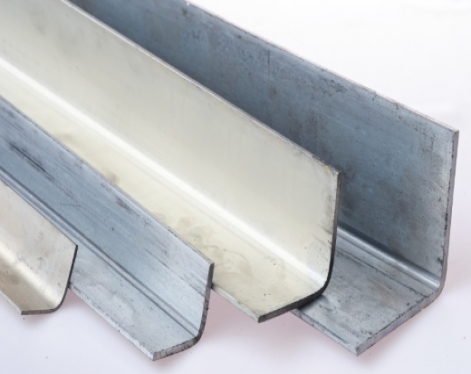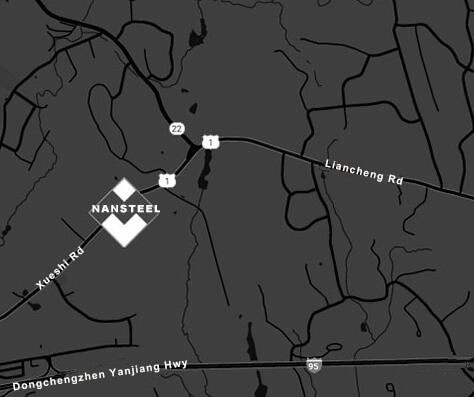There are two types of angle steels: equal angle steels and unequal angle steels. Both types of angle steels are used as connectors between components, but there are certain differences in specifications, prices and uses. Compared with unequal angle steel, equal angle steel has a larger cross-sectional area under the same weight, so it is stronger and more stable. Let's learn about the difference between unequal angle steel and equal angle steel and which one is more stable.
What is the difference between unequal angle steel and equal angle steel?
1. Different specifications
The two sides of equal angle steel are equal in length and thickness; the two sides of unequal angle steel are unequal in length and can be divided into two types: unequal length and equal thickness and unequal length and unequal thickness. The size of equal angle steel is generally a square or rectangle with equal sides and a relatively uniform weight. The size and weight of unequal angle steel are more diverse and can be customized according to specific needs.
2. Different prices
The main products used on the market are equal angle steels. The usage of unequal angle steels is less than that of equal angle steels, and their prices are generally slightly more expensive.

3. Appearance and shape
There is a clear difference in appearance and shape between equal angle steel and unequal angle steel. The two sides of the equilateral angle steel are equal in length, and the shape is like an isosceles triangle, while the two sides of the unequal angle steel are unequal in length, and the shape is more diverse. This difference in appearance directly affects their use scenarios and decorative effects.
4. Material selection
Equal angle steel and unequal angle steel are usually made of ordinary carbon structural steel, but different uses and environmental requirements have an impact on the choice of materials. In the case of strong corrosion resistance, stainless steel angle steel can also be selected.
5. Application
Equal angle steel and unequal angle steel have different applications in various industries. Equal angle steel is mainly used for the support and reinforcement of building structures, such as the corner connection of steel frames; However, unequal angle steels can be customized in size and angle, and are suitable for various fields such as machinery manufacturing, structure decoration, etc.
The difference between equal angle steel and unequal angle steel and their uses in various industries. Equal angle steel and unequal angle steel have obvious differences in appearance, shape, size and weight, material selection and application range. Correct selection and use of angle steel can meet the needs of different industries and improve the stability and safety of building structures and equipment.
Which is more stable, equal angle steel or unequal angle steel?
The stability of angle steel is a major consideration in selection. Compared with equal angle steel and unequal angle steel, which one is more stable? Both equilateral angle steel and unequal angle steel have their specific application scenarios, and their stability also depends on the specific application situation. Generally speaking, under the condition of the same weight, the cross-sectional area of equal angle steel is larger, so it is stronger and more stable. In addition, the symmetry of equal angle steel also makes it more stable when subjected to external forces. Therefore, when it is necessary to withstand large moments and shear forces, equal angle steel is usually more suitable than unequal angle steel.
However, in some cases, unequal angles may be more suitable. For example, in scenarios where fine adjustment and processing are required, unequal angle steels can be cut and deformed more easily, thus more flexibly meeting different design requirements. In general, equal angle steels and unequal angle steels each have their own advantages and disadvantages, and their stability also depends on the specific application and design requirements.
Read more: What are the Material Testing Methods for Angle Steel?
What is the difference between unequal angle steel and equal angle steel?
1. Different specifications
The two sides of equal angle steel are equal in length and thickness; the two sides of unequal angle steel are unequal in length and can be divided into two types: unequal length and equal thickness and unequal length and unequal thickness. The size of equal angle steel is generally a square or rectangle with equal sides and a relatively uniform weight. The size and weight of unequal angle steel are more diverse and can be customized according to specific needs.
2. Different prices
The main products used on the market are equal angle steels. The usage of unequal angle steels is less than that of equal angle steels, and their prices are generally slightly more expensive.

3. Appearance and shape
There is a clear difference in appearance and shape between equal angle steel and unequal angle steel. The two sides of the equilateral angle steel are equal in length, and the shape is like an isosceles triangle, while the two sides of the unequal angle steel are unequal in length, and the shape is more diverse. This difference in appearance directly affects their use scenarios and decorative effects.
4. Material selection
Equal angle steel and unequal angle steel are usually made of ordinary carbon structural steel, but different uses and environmental requirements have an impact on the choice of materials. In the case of strong corrosion resistance, stainless steel angle steel can also be selected.
5. Application
Equal angle steel and unequal angle steel have different applications in various industries. Equal angle steel is mainly used for the support and reinforcement of building structures, such as the corner connection of steel frames; However, unequal angle steels can be customized in size and angle, and are suitable for various fields such as machinery manufacturing, structure decoration, etc.
The difference between equal angle steel and unequal angle steel and their uses in various industries. Equal angle steel and unequal angle steel have obvious differences in appearance, shape, size and weight, material selection and application range. Correct selection and use of angle steel can meet the needs of different industries and improve the stability and safety of building structures and equipment.
Which is more stable, equal angle steel or unequal angle steel?
The stability of angle steel is a major consideration in selection. Compared with equal angle steel and unequal angle steel, which one is more stable? Both equilateral angle steel and unequal angle steel have their specific application scenarios, and their stability also depends on the specific application situation. Generally speaking, under the condition of the same weight, the cross-sectional area of equal angle steel is larger, so it is stronger and more stable. In addition, the symmetry of equal angle steel also makes it more stable when subjected to external forces. Therefore, when it is necessary to withstand large moments and shear forces, equal angle steel is usually more suitable than unequal angle steel.
However, in some cases, unequal angles may be more suitable. For example, in scenarios where fine adjustment and processing are required, unequal angle steels can be cut and deformed more easily, thus more flexibly meeting different design requirements. In general, equal angle steels and unequal angle steels each have their own advantages and disadvantages, and their stability also depends on the specific application and design requirements.
Read more: What are the Material Testing Methods for Angle Steel?









